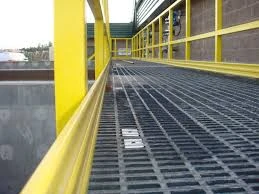
-
 Afrikaans
Afrikaans -
 Albanian
Albanian -
 Amharic
Amharic -
 Arabic
Arabic -
 Armenian
Armenian -
 Azerbaijani
Azerbaijani -
 Basque
Basque -
 Belarusian
Belarusian -
 Bengali
Bengali -
 Bosnian
Bosnian -
 Bulgarian
Bulgarian -
 Catalan
Catalan -
 Cebuano
Cebuano -
 China
China -
 China (Taiwan)
China (Taiwan) -
 Corsican
Corsican -
 Croatian
Croatian -
 Czech
Czech -
 Danish
Danish -
 Dutch
Dutch -
 English
English -
 Esperanto
Esperanto -
 Estonian
Estonian -
 Finnish
Finnish -
 French
French -
 Frisian
Frisian -
 Galician
Galician -
 Georgian
Georgian -
 German
German -
 Greek
Greek -
 Gujarati
Gujarati -
 Haitian Creole
Haitian Creole -
 hausa
hausa -
 hawaiian
hawaiian -
 Hebrew
Hebrew -
 Hindi
Hindi -
 Miao
Miao -
 Hungarian
Hungarian -
 Icelandic
Icelandic -
 igbo
igbo -
 Indonesian
Indonesian -
 irish
irish -
 Italian
Italian -
 Japanese
Japanese -
 Javanese
Javanese -
 Kannada
Kannada -
 kazakh
kazakh -
 Khmer
Khmer -
 Rwandese
Rwandese -
 Korean
Korean -
 Kurdish
Kurdish -
 Kyrgyz
Kyrgyz -
 Lao
Lao -
 Latin
Latin -
 Latvian
Latvian -
 Lithuanian
Lithuanian -
 Luxembourgish
Luxembourgish -
 Macedonian
Macedonian -
 Malgashi
Malgashi -
 Malay
Malay -
 Malayalam
Malayalam -
 Maltese
Maltese -
 Maori
Maori -
 Marathi
Marathi -
 Mongolian
Mongolian -
 Myanmar
Myanmar -
 Nepali
Nepali -
 Norwegian
Norwegian -
 Norwegian
Norwegian -
 Occitan
Occitan -
 Pashto
Pashto -
 Persian
Persian -
 Polish
Polish -
 Portuguese
Portuguese -
 Punjabi
Punjabi -
 Romanian
Romanian -
 Russian
Russian -
 Samoan
Samoan -
 Scottish Gaelic
Scottish Gaelic -
 Serbian
Serbian -
 Sesotho
Sesotho -
 Shona
Shona -
 Sindhi
Sindhi -
 Sinhala
Sinhala -
 Slovak
Slovak -
 Slovenian
Slovenian -
 Somali
Somali -
 Spanish
Spanish -
 Sundanese
Sundanese -
 Swahili
Swahili -
 Swedish
Swedish -
 Tagalog
Tagalog -
 Tajik
Tajik -
 Tamil
Tamil -
 Tatar
Tatar -
 Telugu
Telugu -
 Thai
Thai -
 Turkish
Turkish -
 Turkmen
Turkmen -
 Ukrainian
Ukrainian -
 Urdu
Urdu -
 Uighur
Uighur -
 Uzbek
Uzbek -
 Vietnamese
Vietnamese -
 Welsh
Welsh -
 Bantu
Bantu -
 Yiddish
Yiddish -
 Yoruba
Yoruba -
 Zulu
Zulu
frp flange and blind
Understanding FRP Flanges and Blinds A Comprehensive Overview
Fiber-Reinforced Polymer (FRP) materials have revolutionized various industries due to their exceptional strength-to-weight ratio, corrosion resistance, and durability. Among the numerous applications of FRP, the use of FRP flanges and blinds has become increasingly significant in modern engineering and construction projects.
What are FRP Flanges?
FRP flanges are critical components used to connect pipes, fittings, or other equipment in pipelines. They are designed to provide a robust mechanical connection that can withstand both internal and external pressures. Made from a composite material consisting of a polymer matrix reinforced with fibers (such as glass or carbon), FRP flanges exhibit excellent mechanical properties and resistance to various environmental factors.
One of the primary advantages of using FRP flanges is their lightweight nature, which simplifies installation and reduces transportation costs. Additionally, their resistance to chemical corrosion makes them suitable for demanding applications in industries such as oil and gas, chemical processing, and wastewater treatment. Unlike traditional materials like steel or stainless steel, FRP flanges do not require frequent maintenance, significantly lowering the lifecycle costs.
The Role of FRP Blinds
FRP blinds, also known as blind flanges, serve as closures in piping systems. They are essential when pipelines need to be sealed off for maintenance, inspection, or safety procedures. The primary function of a blind flange is to block the flow of fluids, ensuring that no leakage occurs in the system. This is crucial in preventing accidents and maintaining operational efficiency in various industrial applications.
frp flange and blind

The use of FRP blinds offers similar benefits to that of FRP flanges, such as lightweight construction and exceptional resistance to corrosive environments. Moreover, they provide excellent sealing performance, ensuring that the integrity of the piping system is maintained. Because they do not corrode, FRP blinds can be utilized in harsh environments where traditional materials would fail.
Applications and Benefits
The combination of FRP flanges and blinds can be seen across various sectors, including chemical processing, marine facilities, and power generation plants. The ability to resist aggressive chemicals, UV radiation, and high temperatures makes FRP an ideal choice for applications where conventional materials might degrade over time.
In addition to performance benefits, FRP components also contribute to sustainability goals. Their lightweight nature reduces energy consumption during transportation, and their long life cycle minimizes waste. Furthermore, the potential for recycling FRP materials aligns with modern practices focusing on environmental responsibility.
Conclusion
In summary, FRP flanges and blinds are indispensable in modern engineering, offering a blend of strength, durability, and resistance to harsh environments. Their ability to provide reliable connections and seals in piping systems makes them a preferred choice for many industries looking to enhance efficiency and safety. As technology advances, the adoption of FRP materials is expected to grow, paving the way for more innovative applications in the future.









